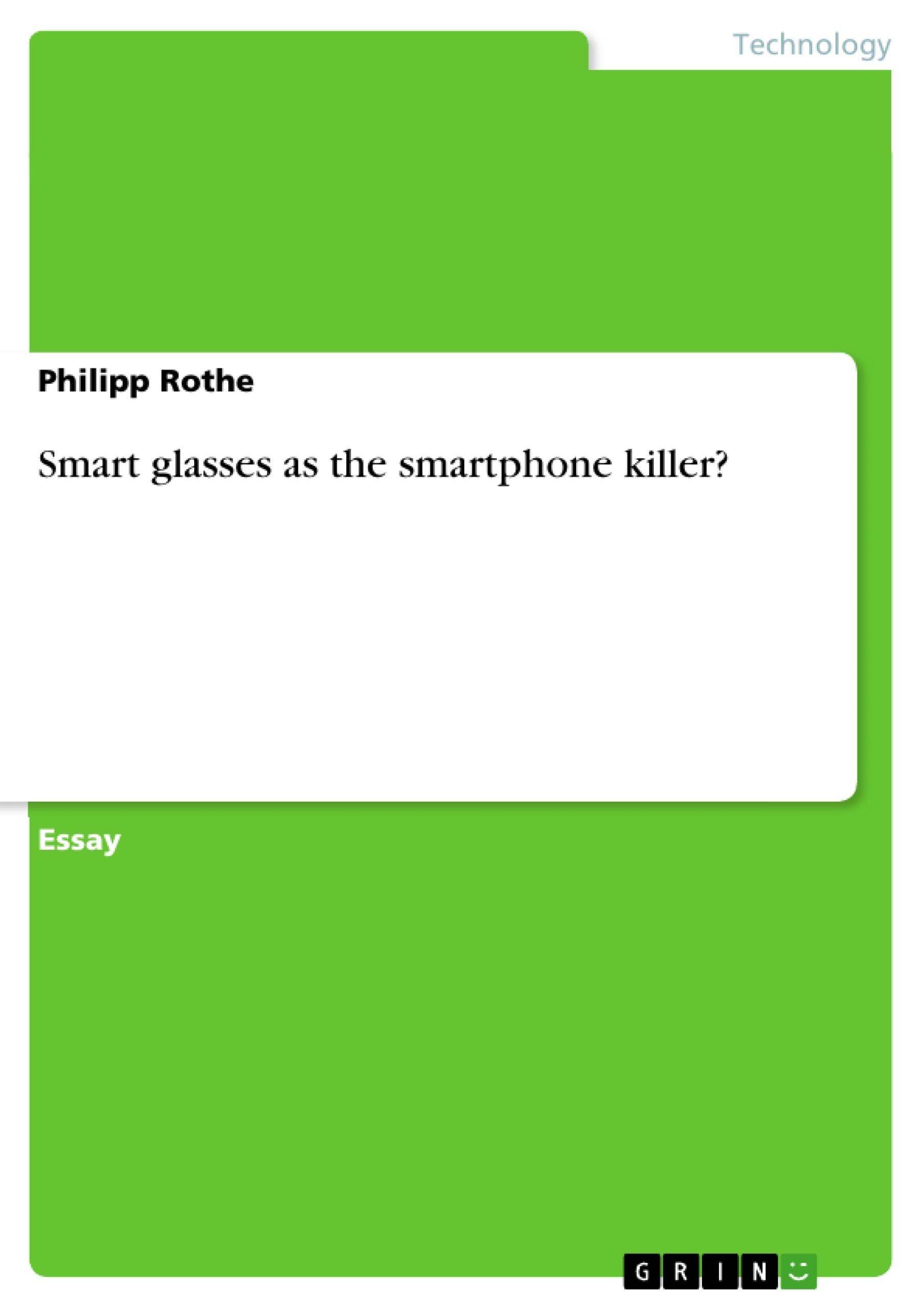Nowadays, it is hard to imagine a world without smartphones. In 2021, 3.8 billion people worldwide use smartphones, which means about 50% of the world's total population.
In the developed countries, as many as 75% of adults own a smartphone. Estimates assume that there are more than 14 billion active smartphones worldwide. That is nearly twice the population of the world. To analyse a smartphone more concrete, the paper will focus on the iPhone, which is the flagship product of Apple.
Inhaltsverzeichnis (Table of Contents)
- Smartphones and Apple's iPhone
- Theory of Christensen and disruptive technologies
- Description of smart glasses and their potential
- Smart glasses as a disruptive innovation which could replace the smartphone
Zielsetzung und Themenschwerpunkte (Objectives and Key Themes)
This text aims to analyze the disruptive potential of smart glasses by applying the theory of disruptive innovation developed by Clayton Christensen. The text compares the iPhone, a well-established product in the smartphone market, to the emerging technology of smart glasses, highlighting the unique features of AR technology that could make it a disruptive force.
- The theory of disruptive innovation by Clayton Christensen
- The characteristics of disruptive technologies
- The potential of smart glasses as a disruptive technology
- The advantages and disadvantages of smart glasses
- The impact of augmented reality (AR) technology on the future of smart devices
Zusammenfassung der Kapitel (Chapter Summaries)
- The first chapter introduces the concept of smartphones, specifically focusing on Apple's iPhone, and analyzes its features and functions in the context of the existing technology landscape. This chapter also highlights the functional oversupply of the iPhone, suggesting that its primary function is no longer limited to phone calls but encompasses a wide range of applications.
- The second chapter delves into the theory of disruptive technologies as articulated by Clayton Christensen, presenting his concept of how established companies may overlook emerging technologies in favor of focusing on their core customer base. The chapter then applies this theory to the iPhone, discussing Apple's strategy of adding incremental features rather than engaging in radical innovation.
- The third chapter introduces smart glasses, highlighting their potential as the next major technological breakthrough. The chapter emphasizes the unique feature of augmented reality (AR) technology in smart glasses and discusses its potential to revolutionize user interaction with technology.
- The fourth chapter examines whether smart glasses qualify as a disruptive innovation based on Christensen's criteria. The chapter analyses the current market situation, consumer acceptance, and the potential for AR technology to disrupt the smartphone market.
Schlüsselwörter (Keywords)
The key concepts explored in this text include disruptive innovation, augmented reality (AR), smart glasses, smartphones, Apple's iPhone, Clayton Christensen's theory, functional oversupply, technology adoption, and market dynamics.
- Quote paper
- Philipp Rothe (Author), 2021, Smart glasses as the smartphone killer?, Munich, GRIN Verlag, https://www.grin.com/document/1357329




